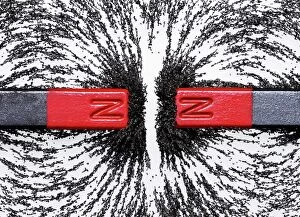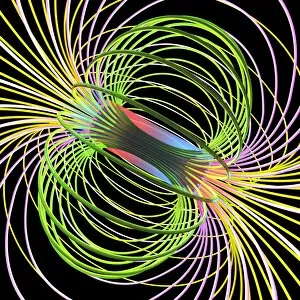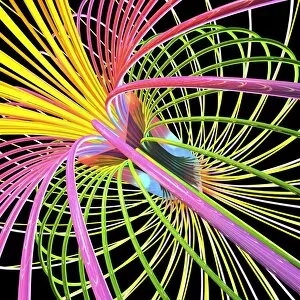Ferromagnetic Collection
Ferromagnetic materials possess a unique property that sets them apart from others - magnetic attraction
For sale as Licensed Images
Choose your image, Select your licence and Download the media
Ferromagnetic materials possess a unique property that sets them apart from others - magnetic attraction. When two magnets with like poles face each other, they experience a force called magnetic repulsion. This phenomenon occurs due to the presence of a strong magnetic field surrounding these objects. In artwork C016 / 9855, iron filings are seen aligning themselves along the lines of force in the magnetic field created by a magnet. This captivating display showcases how ferromagnetic substances interact with magnets and respond to their influence. Similarly, in artworks C016 / 9850, C016 / 9853, and C016 / 9851, we witness intricate patterns formed by iron filings as they react to different arrangements of magnets. These mesmerizing designs highlight the power and complexity of magnetic fields generated by ferromagnetic materials. Not limited to just iron, nickel is another element that exhibits ferromagnetism. In artwork C016 / 9852, we observe how nickel responds to an external magnetic field with its own distinct pattern formation. The versatility properties extends beyond one material alone. Artwork C016 / 9854 further emphasizes the significance of magnetic fields in our understanding of ferromagnetism. It portrays multiple magnets interacting with each other's fields, creating an enthralling visual representation of this natural phenomenon. The existence and behavior of these fascinating forces have far-reaching implications in various scientific disciplines such as physics and engineering. Understanding how ferromagnetic materials interact within a magnetic field enables us to develop technologies like electric motors or MRI machines that rely on these principles for their functionality. Exploring the world through the lens of ferromagnetism provides us with captivating insights into nature's hidden forces at play - from witnessing intriguing patterns formed by iron filings under different conditions to unraveling complex interactions between various elements within powerful magnetic fields; it truly is an awe-inspiring realm worth delving into.













